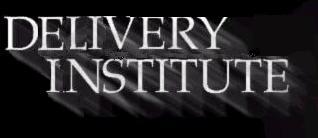
Strengths and Weaknesses
By P.S. Braterman, 2008



A colleague and I have made the shocking discovery that American schools teach uncritically the Uterine Development Theory of where babies come from, without even considering the well-established alternative theory, Storkism (Arkansas, we are pleased to report, is a notable exception).
Consider the strengths of Storkism, which is confirmed by direct observation (J.P. Jekowski, personal observation, above), and by a rapidly expanding scientific literature (see also Stein et al.), although Dawkins dismisses the theory in his usual militant closed-minded manner.
We have depictions of storks carrying fully developed human children on birth congratulations cards from all over the world (in East Asia, they are replaced, appropriately enough, by their close relatives the cranes), and the actual process of delivery by stork has now been captured on film by Brazilian gynecologists.
There is a strong positive correlation between the stork population and the birth rate.
Now consider the weaknesses of Uterine Development Theory (UDT).
Millions of American parents prefer to offer their children stork-only education, so that teaching UDT in schools undermines the family, which is the basis of all morality.
We will not labor the familiar point that, since it is a theory, it is either unscientific or disprovable, and therefore we should never regard it as proven.
Despite numerous claims to the contrary, no one has ever actually seen the development of a baby in a uterus. There are a large number of images of what supporters of the theory claim are different stages of development, but all of these fall into one of two classes, insignificant change between successive images (Microdevelopment, which is not in dispute), and significant change between successive images (change of type, which is impossible, as shown by the absence of the missing links).
UDT postulates the existence of a disposable organ known as the placenta. A little bit of calculation shows that if the theory is true, and if we modestly estimate the number of human babies delivered to date as ten billion, enough placentas must have been generated to cover the entire State of Texas with placentas to a depth of 20 feet. But the State of Texas is not covered with placentas at all. This alone should conclusively refute the theory.
The UDT theory also requires that the process be initiated by a procedure so grotesque that it can only be the product of a diseased imagination. Do we really want people with diseased imaginations to be deciding what is taught in our schools?
Finally we have the mathematical argument in favor of Storkism, as given by Dembskian set theory. Within all sets of families, each mother has her own children, and not anybody else's. Have you ever considered how improbable this is? If we consider a set of only 20 families, a little calculation will show that under UDT the probability of this happening by chance is no more than one in 20 Factorial, or 1 in 2,432,902,008,176,640,000. Under Storkism, this apparently insuperable problem is immediately solved by the intervention of ID, or Intelligent Delivery. Intelligent Delivery is the only known effective means to achieve such a feat, as demonstrated daily by the operations of the Postal Service, and Occam's Razor shows on philosophical grounds that no other process is necessary.
We thank the Delivery Institute's Center for Science and Culture for unprecedented insights.

© P.S. Braterman, 2008. Reproduction in whole or in part strongly encouraged.
